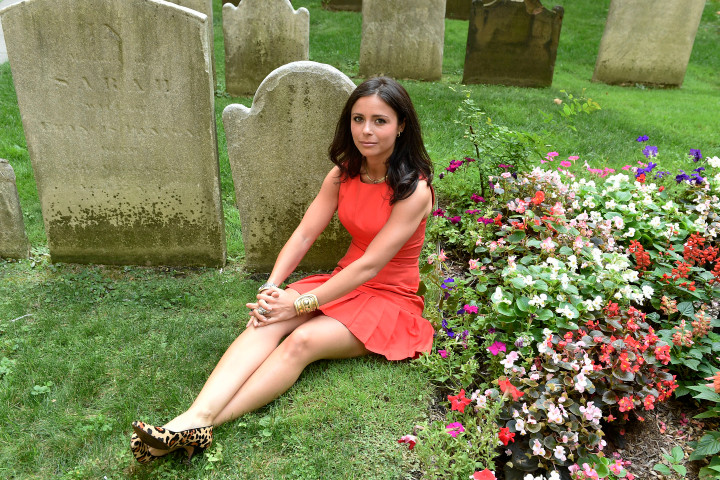Inside the Secrets of a Funeral Home For the Rich
Article originally appeared on NY Post
It’s the place New York City’s elite are dying to get into: Frank E. Campbell, the illustrious funeral home that has waked everyone from Rudolph Valentino to Biggie Smalls, John Lennon to Joan Rivers, Walter Cronkite to Heath Ledger.
At Campbell, confidentiality is key, and even in death — that great equalizer — celebrities are supposed to go out with more elegance and style than the rest of us. Jackie O, for example, was embalmed in her apartment so that the press wouldn’t get a photo of her in a body bag. Instead, she was removed from her Fifth Avenue apartment building in a casket.
“High-five figure services were regular,” says Elizabeth Meyer, a 30-year-old socialite who spent five years working at Campbell. “But we had some six-figure funerals as well. There’s no right or wrong — it’s what you want to spend.”
In her new memoir, “Good Mourning” (Gallery Books), Meyer writes about the strangest services and corpses she pulled together — and things at Campbell, or “Crawford,” as it’s called in the book, aren’t as chic as you might think.
There was the room she converted into a replica of Bungalow 8, replete with palm trees and a DJ, so mourners could properly send off an infamous party boy. His family buried him in his favorite things: a Snoopy T-shirt and bright green sneakers, a bottle of absinthe in his hand.
On the guest list: royalty and rockers, socialites and designers. “It all felt a little empty,” Meyer writes. “My fears were confirmed when I saw guests coming out of the bathroom with red noses. Suddenly it made sense why the family had asked if the upstairs bathroom had marble countertops.”
There was the tour bus parked outside for guitarist Les Paul; the $100,000 Ferrari placed next to the casket of a millionaire car collector, who was buried with a black Ferrari jacket and a gold chain. (Names have been changed, but identifying details remain.)
There were the two women who called for the same husband, each completely unaware of the other. Meyer was at a loss; her boss, on the other hand, had seen just about everything. He called one widow, then the other, explaining that two identical phone calls had come in about the same man.
“These people, I tell ya,” Meyers’ boss said. She asked if the widows were surprised. “Even when they don’t know, they know,” he said.
He had two wakes for two families, though the widows rode to the cemetery in the same car.
Then there was the phone call from the son of a socialite who had just passed away and was about to be embalmed at Campbell. Meyer didn’t know she was there.
“I have a favor to ask,” he said. “I need . . . my sister and I . . . we need . . . Can you tell me that my mother’s brain is in her head?”
Meyer ran downstairs to check the autopsy report. The brain had been listed as still in the body. She raced back to the phone.
“Yes,” she told him. “The autopsy report says that the brain is —”
“No, no, no. Not the autopsy report . . . I need you to physically see the brain. I’ll hold.”
Meyer ran back down to the embalming room, where she flipped through the file and realized who this corpse was: the infamous Sunny von Bulow, whose husband, Claus, had been tried twice for her attempted murder and had since fled the country.
“The only way to see what, exactly, was left was to cut open her skull,” Meyer writes. The embalmer “started to cut with extreme precision while I braced myself for an eyeful of brains.”
Instead, balled-up pieces of Bounty paper towels fell out. Meyer freaked.
“Take it easy,” the embalmer said. “It might be in her stomach.”
“Her stomach? Why would her brain be in her stomach?”
“Sometimes after an autopsy, they take all the organs and stick ’em in a bag, then sew it up in the stomach. It’s just what they do.”
The bag was there, but the brain wasn’t. Her son took the news remarkably well, and Meyer never heard about it again.
“Before working there, I’d probably seen three dead bodies in my life, all at wakes,” Meyer says. “And they all looked like they were supposed to in America — beautiful and sleeping. Which is ridiculous.”
Meyer grew up in wealth and privilege on the Upper East Side. She went to school at Trinity (current yearly tuition averages $45,000), where she met her best friend, Ali Hilfiger, daughter of designer Tommy. After graduation, Meyer attended NYU while partying all over the world.
Then her beloved father died. He’d been sick for five years with lymphoma, but Meyer never believed he wouldn’t make it. She threw herself into planning his funeral and walked a few blocks from the family’s apartment to Campbell, where someone immediately tried to sell her a $90,000 bronze casket.
Meyer declined. “But I did buy a beautiful and costly mahogany casket for my dad,” she says — and then had him cremated. She refuses to blame the funeral industry for taking advantage of those overwhelmed by grief, though she herself fell prey.
“Would my dad have preferred a clean, non-ornate casket, and that I donate the rest of the money to charity? Yes. But at the time I thought: This is the last thing I can ever buy him.”
Her father was an entertainment lawyer, and famous people packed the room at Campbell. At that moment, she realized that unlike most of her friends in attendance, she’d actually been raised and loved by her parents — not nannies or sundry household staff.
“It should have been my father,” one friend told Meyer at the wake. “It’s not fair.”
Meyer spent much of the next year lost, mourning her father and thinking constantly about working at Campbell. She’d never had an interest in death or the funeral industry until he died, and her mother was horrified: “But Elizabeth,” she said, “you could work in fashion!”
So Meyer did what girls in her circle do: “I took a job at a PR company,” she says. “I did a nonprofit in South Africa — one of my passions had always been doing charity work in Africa — and then one of my friends said, ‘You know what? The funeral home makes complete sense. It’s charity work, and it’s on the Upper East Side.’ ”
—Read the rest of the article—




